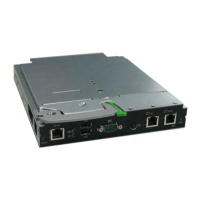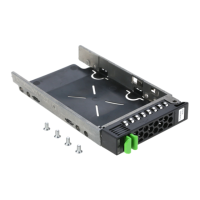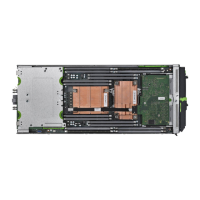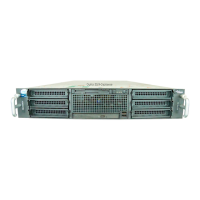© 2011 Fujitsu Technology Solutions
23
2.1.3 Spanning Tree Protocol Features
Spanning Tree Protocol (STP)
Spanning Tree Protocol (STP, IEEE 802.1D) – This protocol adds a level of fault tolerance by allowing
two or more redundant connections to be created between a pair of LAN segments. When there are
multiple physical paths between segments, this protocol will choose a single path and disable all others
to ensure that only one route exists between any two stations on the network. This prevents the creation
of network loops. However, if the chosen path should fail for any reason, an alternate path will be
activated to maintain the connection.
IEEE 802.1w Rapid Spanning Tree
Rapid Spanning Tree Protocol (RSTP, IEEE 802.1w) – This protocol reduces the convergence time for
network topology changes to about 10% of that required by the older IEEE 802.1D STP standard. It is
intended as a complete replacement for STP, but can still interoperate with switches running the older
standard by automatically reconfiguring ports to STP-compliant mode if they detect STP protocol
messages from attached devices.
IEEE 802.1s Multiple Spanning Tree
IEEE 802.1s Multiple Spanning Tree - The IEEE 802.1s is the supplement to IEEE Std 802.1Q adds the
facility for VLAN bridges to use multiple spanning trees, providing for traffic belonging to different VLANs
to flow over potentially different paths within the virtual bridged LAN.802.1s supports spanning tree by
per VLAN.
Fast Link
STP can take up to 30-60 seconds to converge. During this time, STP detects possible loops, allowing
time for status changes to propagate and for relevant Ethernet Connection Blade Modules to respond.
30-60 seconds is considered too long of a response time for many applications. The Fast Link option
bypasses this delay, and can be used in network topologies where forwarding loops do not occur.
UplinkFast
UplinkFast provides fast convergence after a direct link failure and achieves load balancing between
redundant Layer 2 links using uplink groups. An uplink group is a set of Layer 2 interfaces (per VLAN),
only one of which is forwarding at any given time. Specifically, an uplink group consists of the root port
(which is forwarding) and a set of blocked ports, except for self-looping ports. The uplink group provides
an alternate path in case the currently forwarding link fails.
LoopGuard
The STP loop guard feature provides additional protection against Layer 2 forwarding loops (STP loops).
An STP loop is created when an STP blocking port in a redundant topology erroneously transitions to the
forwarding state. This usually happens because one of the ports of a physically redundant topology (not
necessarily the STP blocking port) no longer receives STP BPDUs. In its operation, STP relies on
continuous reception or transmission of BPDUs based on the port role. The designated port transmits
BPDUs, and the non−designated port receives BPDUs.
When one of the ports in a physically redundant topology no longer receives BPDUs, the STP conceives
that the topology is loop free. Eventually, the blocking port from the alternate or backup port becomes
designated and moves to a forwarding state. This situation creates a loop.
The loop guard feature makes additional checks. If BPDUs are not received on a non−designated port,
and loop guard is enabled, that port is moved into the STP loop inconsistent blocking state, instead of

